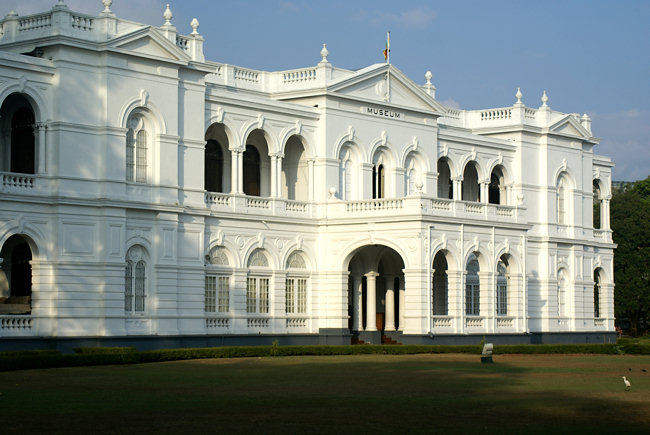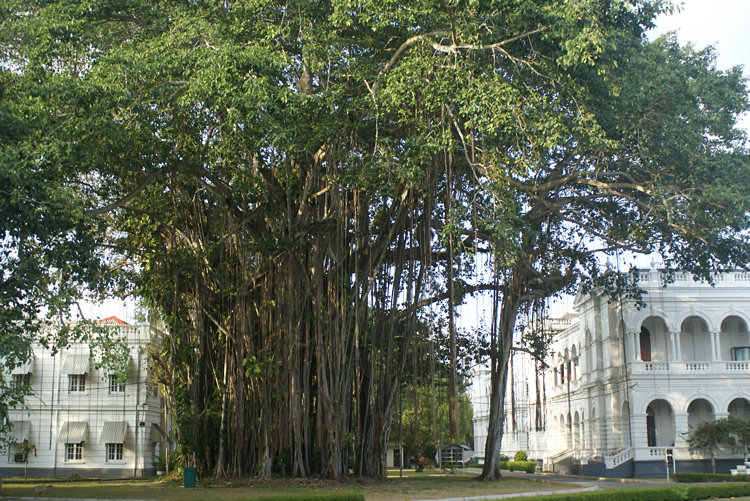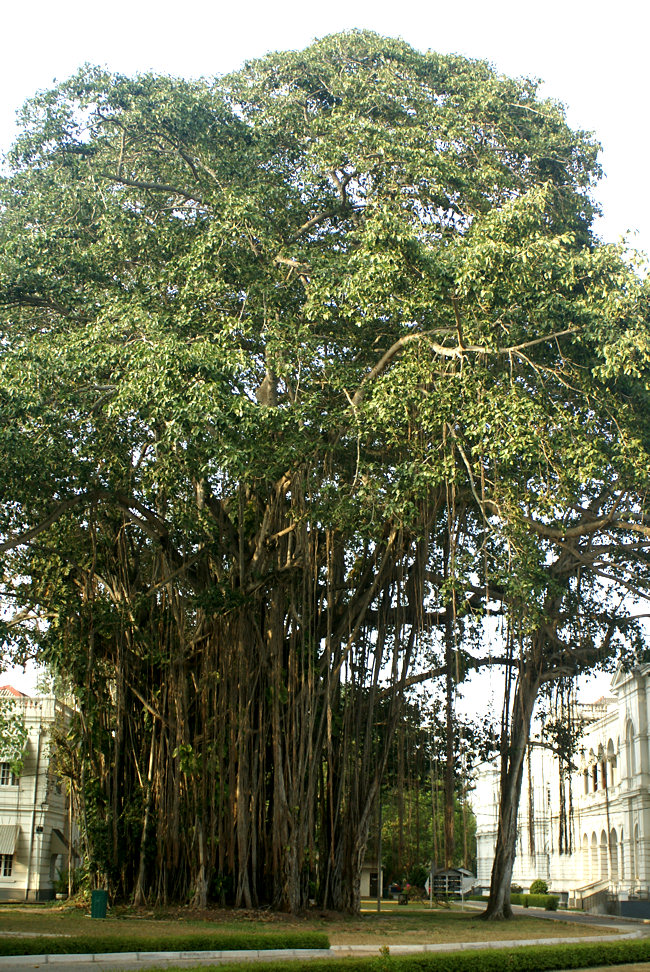Colombo National Museum and National Art Gallery
Just south of Viharamahadevi Park and Colombo Town Hall you will find the National Museum of Sri Lanka. It is housed in an elegant white colonial period building that projects power and wealth. Unfortunately you cannot gain access along the park road.

Colombo National Museum and National Art Gallery of Sri Lanka
You have to walk around Albert Crescent and go in the gateway to the National Museum. You have to walk around the back of the National Museum to get to the Sri Lanka Colombo National History Museum. One of the outstanding memories I have of the Colombo Museum complex, apart from the attractive colonial architecture, was the amazing giant trees planted in the grounds with long tendrils that touch the grass lawns.
The building is shared with the National Art Gallery. Don't expect the same high quality of displays you would find in Museums in Washington, London or Paris. It is like visiting a museum back in the 1960s. There are no Hands on section or area specifically aimed at younger visitors. It desperately needs a modern upgrade. The displays are old fashioned by their standards.
You can still find things of interest. Ideal if it is wet and you are travelling with children or teenagers. You will find lots of stuffed birds and animals set in their natural habitat. Many need dusting. There are exhibits on the geology and gems of Sri Lanka. The climate and plant life is explained. There is a huge skeleton of an elephant. There are explanatory panels covering the Sri Lanka's Irrigation and hydro-electric projects.

The amazing giant trees planted in the grounds of the National Museum of Sri Lanka with long tendrils that touch the grass lawns
It houses collections of artifacts that are important for telling the story of Sri Lanka. A good example is the royal regalia that once belonged to the Kandyan Kings who once ruled the Sri Lankan highlands. This includes the jewels, crown and royal throne. There are exhibits that explain what life was like during the Portuguese, Dutch and British colonial period. The ground floor galleries are in historical sequence and try to portray the history of Sri Lanka. The upper galleries are on a more thematic basis.
The Royal Asiatic Society approached the British Governor of Ceylon, Sir William Henry Gregory, with a request that a public Museum, to house and display various artefacts that had been collected over the years, be built. Legislation was passed and finance found to enable a Neo-classical grand house to start being built in 1876. It opened the following year.
There are branches of the National Museums in Jaffna, Kandy, and Rathnapura. Other smaller local museums have been set up, all overseen by the Sri Lankan Department of National Museums. The British added the contents of the Ceylon Oriental Library to the Colombo National Museum in 1877 and it has been collecting documents, publications and valuable books that relate to the Island ever since. There are over 500,000 books available to historians, genealogists and members of the public to study.

National Museum of Sri Lanka in Colombo has giant trees in its grounds
What I found particularly interesting was the collection of thousands of palm leaf manuscripts. They were created by etching letters into the fibrous leaf surface. There is a small art gallery of Victorian paintings and etchings that depict colonial Ceylon during that period. It is fascinating to study the period dress worn at that time. They must have been so hot. I get too hot in an open necked shirt and shorts. Oh yes talking about heat. The museum can get quite hot at times.
Something unique to the Colombo National Museum is its collection of Buddhist demons and deities grotesque masks. The Puppetry and Children's Museum explains how important puppetry is to Sri Lanka's heritage. If you visit at the weekend you may be lucky to catch a performance. The Museum ticket is not cheap compared with other Sri Lankan tourist attractions. As normal the local population are charge a lot less. The Museum is split between two locations. Each needs a separate ticket. You can pay for a joint ticket.
Travel books

